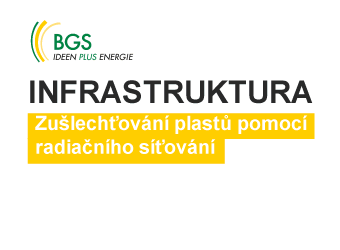Weekly commodity price report
Here are the market prices of various types of commodity plastics PE-LD, PE-HD, PP and PS in Central and Eastern Europe with a delay of 5 weeks. The data was processed by our partner myCEPPI.
Are you interested in current prices for commodity plastics? You can order Weekly polymer price reports from our editors.
Prices for this week 3/2019
The following factors influenced “commodity” polymer prices and price expectations last week:
- BRENT oil price 61.68 USD/barrel, prices increasing again,
- EUR/USD: 1.1498, Euro getting stronger
- NAPHTHA: 468, U28SD/t, increasing prices
- Average demand as usual in January,
- Decreasing contractual monomer olefin and dropping SM contracted prices
- Ethylene (C2) contracted price January -40 EUR/t (985 €/t)
- Propylene (C3) contracted price January -35 EUR/t (925 €/t)
- Styrene monomer (SM) contracted price January -15 EUR/t (975 €/t)
- The spot propylene price increased by 25 Euro compared to December 31, 2018.
- In the second half of the last week also the markets of the southern market returned from holiday.
Polymer producers came up with their prices early last week. Compared to the prices in December, in case of LDPE the amount of price drop is between 30-40 €/ton, in case of HDPE between 10-40 €/ton, and in case of PP between 10-25 €/ton. All this is line with the preliminary expectations. Demand is not high yet. The reason is that working days in January have started practically on the 7th and in the orthodox Christian countries in the second half of the last week. Accordingly the volume of orders of polymer producers has not reached yet the rate usual at the middle of the month. Only an average 65-75% of the production of January is covered by orders. This is how one of the major regional producers reduced its prices in several steps last week. There was probably the constraint to sell in the background. During the next three weeks ahead demand will increase. The price of oil and naphtha has already started increasing and so did also the price of spot propylene (C3). According to the forecasts the oil price level of higher than 60 USD (Brent) will be permanent and it is possible that the price of NAPHTHA will increase soon to above 500 USD. In this case also monomer and polymer prices will follow the prices of feedstocks. These expectations might boost demand in the second half of January.
The price of SM seems to have hit bottom. The same happened to PS prices. GPPS and HIPS prices have dropped to an extent greater than the price drop of monomer grades. Prices dropped by 15-50 Euro. For the time being it would be too early to talk about February, but a minor price increase has already started on the markets of the Far-East. This will as usual also spill over on the European market as well. Spot SM prices have not started increasing yet, prices are unchanged. But market players anticipate a price volatility similar to that of recent years. This means a sudden and steep 3-digit increase and decrease.
It is true both for polyolefin and polystyrene grades that further price reduction can be anticipated neither in January nor in February.
In detail
Polyolefin grades
On the average LDPE prices dropped by 40 Euro, the typical price range is 980-1,080 €/t. The demand is not too high, supply is good. Only some grades produced by Slovnaft are in short supply, but in the second half of the month these will be available again. There are many kinds of materials on the market, in particular in Poland. Due to this some major buyers can buy even at prices below 980 Euro.
Not every producer did the same move in the HDPE price reduction. Prices decreased by 10-40 Euro. The Polish producer decreased prices most. The Hungarian producer reduced prices least, on the Hungarian market, by 10-20 Euro only. In Central Europe the typical HDPE prices were in a range of 1,070-1,200 €/t last week. Cheapest prices were in Poland starting from 1,070 Euro. HDPE IM prices were in a range of 1,070-1,160 €/t and HDPE Film and BM prices were in a range of 1,080-1,200 €. We do not expect further price drop in the second half of January any more.
The typical HDPE (100) prices in January are in a range of 1,230-1,300 €/t. Demand is low. For the time being pipe manufacturers are busy with maintenance, sales are low. Demand is expected to grow only as late as in February.
The USD getting weaker resulted also in the drop of LLDPE C4 prices, the typical price range was 980 - 1,120 €/t last week. The drop of the bottom of the price range was caused by the significant oversupply.
Also mLLDPE prices dropped significantly, prices varied in a broad range (1,150-1,340 €/t). As the products of more and more producers is available in Central-Europe, it is natural that the prices range is getting broader and average prices are dropping.
PPH prices were in a range of 1,100-1,240 €/t last week. On the average there was a price decrease 20 €. The lowest prices were in Bulgaria and Romania. But prices were balanced in the other parts of Central Europe. The PPH market seems to start well, demand is high. Supply is satisfactory, not too broad. PPH Raffia prices were in a range of 1,100-1,190 €/t. The price range of non-special PPM IM products with medium melt index was 1,120-1,210 €/t. The prices of products with high melt index were in a range of 1,180-1,250 €/t last week. In the second half of the month demand is expected to get stronger.
Typical prices of PPC grades were in a range of 1,240-1,340 €/t in Central-Europe last week. On the average polymer producers decreased prices by 10-25 €. Demand for IM products is good. The demand for extrusion, first of all pipe products is low.
The PPR price range was 1,240-1,380 €/t, depending on the grade, producer and application area last week. There was a price reduction by 10-25 Euro. The demand, with the exception of pipe materials, is good, as usual in January. The demand is expected to increase further.
The typical prices of the last week are presented in the table below (full truck load 20-22.5 t):
Grade name | Typical polymer price ranges in the second week of January, 2019, Central Europe (€/ton) |
HDPE BM | 1,090-1,200 |
HDPE Film | 1,080-1,180 |
HDPE IM | 1,070-1,160 |
HDPE Pipe (100) | 1,230-1,320 |
LDPE Film | 980-1,100 |
LDPE GP | 980-1,100 |
LLDPE C4 | 980-1,120 |
PPC | 1,220-1,330 |
PPH IM | 1,120-1,250 |
PPH Raffia | 1,100-1,800 |
PPR | 1,260-1,360 |
GPPS | 1,180-1,250 |
HIPS | 1,210-1,300 |
EPS | 1,260-1,370 |
Polystyrene grades
The polystyrene market is Janus-faced:
With regard to EPS there was no significant price reduction. Last week in Central Europe EPS prices were in a range of 1,250-1,350 €/t. The price reduction would not have had a major impact on the demand at all, as due to the winter most, mainly small and medium-sized companies do not produce insulation materials. Only financially sound, major producers produce continuously.
The GPPS and HIPS prices typically dropped to an extent exceeding the drop of monomer prices. GPPS prices were typically in a range of 1,170-1,230 €/t. Some major buyers could even get a price of 1,150 Euro. Supply is good. Typical GPPS prices are in a range of 1,200-1,250 €/t HIPS prices are in a range of 1,190-1,280 €/t. In the southern region there are high quantities of GPPS and HIPS from Iran. But these materials do not have a significant price advantage compared to the materials produced in Europe. The prices of polystyrene grades from Europe seem to have reached their lowest level now. Expectedly now the only way is up. This might mean that demand will increase next week.
| Type | Price |
|---|---|
| HDPE blow molding | 1135 € / t |
| HDPE film | 1130 € / t |
| HDPE injection molding | 1135 € / t |
| HDPE pipe (100) | 1296 € / t |
| LDPE film | 1036 € / t |
| LDPE general purpose | 1036 € / t |
| PP co-polymer injection molding | 1259 € / t |
| PP homo-polymer fiber | 1179 € / t |
| PP homo-polymer injection molding | 1192 € / t |
| PPR | 1303 € / t |
| GPPS | 1196 € / t |
| HIPS | 1231 € / t |
| EPS | 1307 € / t |
myCEPPI – a new voice and new approach on the plastics industry consulting and business intelligence market. With our expert advice, you can get a detailed, up-to-date and tailor-made picture of the Central and Eastern European plastics market and its main trends, data, news and key players.
Our services rely on our personal, regular and in-depth relations with players of the CEE plastics industry.
Each month, we conduct hundreds of interviews and telephone calls with industry players – plastics converters, traders, resin manufacturers – and we are also present at the biggest regional plastics trade fairs and conferences.
The information we collect in the process forms the basis of our weekly price report and market analysis; it feeds into our plastics industry company database; and it serves as the starting point for our multi-level consulting services for companies that need help sizing up, entering or navigating a specific market.
Our experts possess decades of plastics industry experience, as well as fluency in several regional languages.
Our partners include
- key players of the CEE plastics industry – the resin
- master-batch and machinery manufacturers
- distributors, and plastics converters that shape market trends across the region.
We would be happy to welcome you as a partner; please do not hesitate to contact us!
(László Büdy, Managing director, head of consulting)
Price history
- 2024:
- 2023:
- 2022:
- 2021:
- 2020:
- 2019:
- 2018:
- 2017:
Latest Classifieds
-
05.03.2024 | ID: 202418726
Top Advert To purchase: PPSU regrind banner
17.04.2024 | ID: 202418988
For Sale: Packaging press PL 12
17.04.2024 | ID: 202418987
To purchase: POM C regrind colour, white, natur
17.04.2024 | ID: 202418986
-
16.04.2024 | ID: 202418984
-
15.04.2024 | ID: 202418980
For Sale: PP vstrekovací - drť biela
15.04.2024 | ID: 202418979
For Sale: Drť EVA Escorene UL00514
15.04.2024 | ID: 202418978
-
15.04.2024 | ID: 202418977
To purchase: PPSU regrind banner
17.04.2024 | ID: 202418988
To purchase: POM C regrind colour, white, natur
17.04.2024 | ID: 202418986
To purchase: Package quality LDPE film. 500 t/month
15.04.2024 | ID: 202418966
To purchase: Dirty granulates from ground
15.04.2024 | ID: 202418964
To purchase: PC and PMMA waste, regrinds, lumps etc.
11.04.2024 | ID: 202418943
To purchase: PET transparent trays, only Central Europe due to shipping costs
10.04.2024 | ID: 202418939
To purchase: PA6.6 GF25, TECHNYL A218, original
09.04.2024 | ID: 202418928
-
09.04.2024 | ID: 202418927
-
09.04.2024 | ID: 202418924
-
05.03.2024 | ID: 202418726
Top Advert For Sale: Packaging press PL 12
17.04.2024 | ID: 202418987
-
16.04.2024 | ID: 202418984
-
15.04.2024 | ID: 202418980
For Sale: PP vstrekovací - drť biela
15.04.2024 | ID: 202418979
For Sale: Drť EVA Escorene UL00514
15.04.2024 | ID: 202418978
-
15.04.2024 | ID: 202418977
For Sale: PA 6.6 Ultramid A3U42G6 grind
15.04.2024 | ID: 202418976
For Sale: Color Masterbatches on LLDPE carrier
15.04.2024 | ID: 202418973
Upcoming Events
22.04.2024 - 26.04.2024 | Hannover
22.04.2024 - 26.04.2024 | Sao Paulo
23.04.2024 - 25.04.2024 | Maastricht
23.04.2024 - 26.04.2024 | Shanghai
23.04.2024 - 26.04.2024 | Wels
23.04.2024 - 25.04.2024 | Varšava
06.05.2024 - 10.05.2024 | Orlando
Saudi Plastics and Petrochem 2024
06.05.2024 - 09.05.2024 | Rijád
06.05.2024 - 09.05.2024 | Stuttgart
15.04.2024
16.04.2024
16.04.2024
17.04.2024
17.04.2024
Training - Injection moulding technology I.
15.04.2024
Festival of personnel and talent development
16.04.2024
17.04.2024
Training - Injection moulding technology II.
17.04.2024
17.04.2024
Job offers
-
11.04.2024
Plastic worker, gluing staff - FORM s.r.o.
10.04.2024
Logistics, warehouse and shipping supervisor - KNP s.r.o.
09.04.2024
Warehouseman - AIS Automotive Interior Systems Slovakia s.r.o.
09.04.2024
Sales representative / sales specialist - Plastcom, spol. s r.o.
04.04.2024
Maintenance and operation of the production line - Plastcom, spol. s r.o.
04.04.2024
Quality control technician - ESOX-PLAST s.r.o.
04.04.2024
Master of professional training - ESOX-PLAST s.r.o.
04.04.2024
Store manager - Ecocycle s.r.o
25.03.2024
Branch Dictionary







